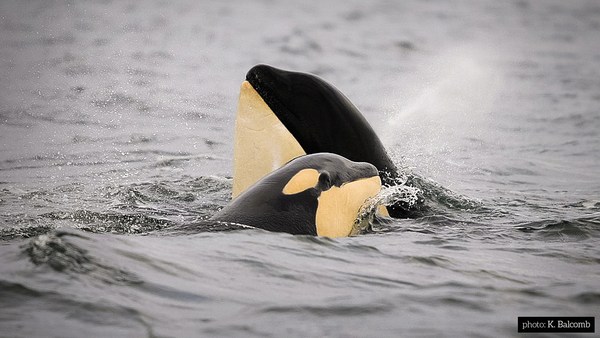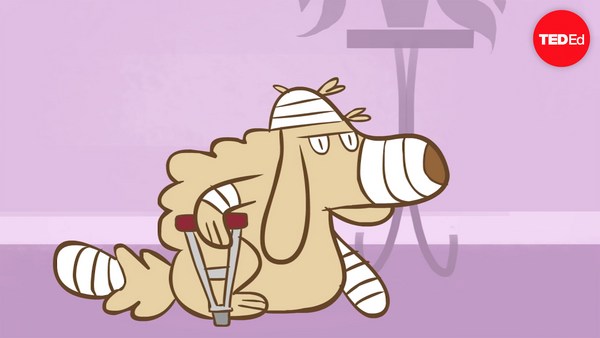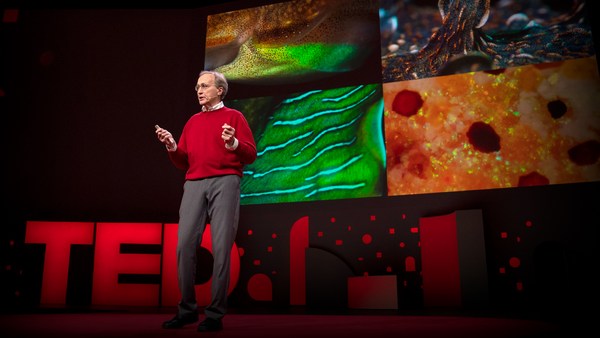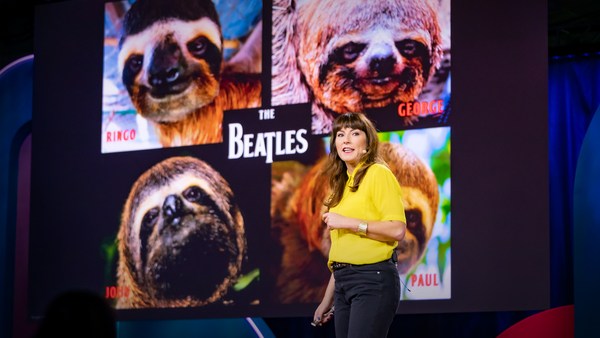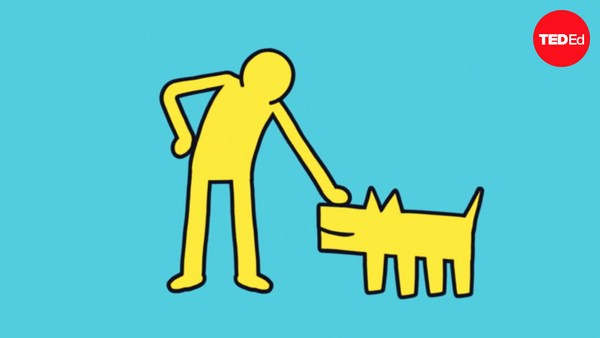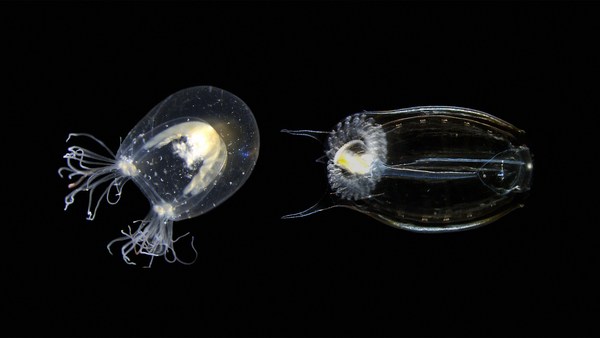I'd like to tell you today about an orca named Tahlequah. Tahlequah is also known as J35 to scientists, because she swims with the J Pod in the Salish Sea. These are the waters off of British Columbia and Washington State.
Now, last year, in July 2018, she was well along in her 17-month pregnancy, and scientists were very excited because no baby had survived in this pod for three long years. Now, orcas are also known as killer whales. They're profoundly social and profoundly intelligent beings. And scientists are very interested in their behavior, because in their social networks, they share habits, information and even affection. They create true cultures of the ocean. But this pod has been in trouble. The Chinook salmon that the orcas favor has been way down in the region, and pollution has been up. But on July 24th, Tahlequah gave birth to a daughter, and scientists were so excited by this development. But unfortunately, the same day -- in fact, shortly after birth -- the calf died.
Well, what happened next electrified animal lovers across the world, because Tahlequah refused to let her baby slip off into the water. She kept it on her body and she swam with it. If it did fall off, she would dive and rescue it, and she battled stiff currents to do this. Now, she kept this behavior up for 17 days, and during this time, she swam over 1,000 miles. At that point, she let the little baby slip off into the water.
So today, Tahlequah swims on with the J Pod, but her grief still moves me. And I do believe that "grief" is the right word to use. I believe that grief is the right word to use for numerous animals who mourn the dead. They may be friends or mates or relatives. Because these visible cues, these behavioral cues, tell us something about an animal's emotional state. Now, for the last seven years, I've been working to document examples of animal grief -- in birds, in mammals, in domesticated animals and in wild animals -- and I believe in the reality of animal grief.
Now, I say it this way because I need to acknowledge to you right up front that not all scientists agree with me. And part of the reason, I think, is because of what I call the "a-word." The a-word is anthropomorphism, and historically, it's been a big deterrent to recognizing animal emotions. So, anthropomorphism is when we project onto other animals our capacities or our emotions. And we can all probably think of examples of this. Let's say we have a friend who tells us, "My cat understands everything I say." Or, "My dog, he's so sweet. he ran right across the yard this morning towards a squirrel, and I know he just wants to play." Well, maybe. Or maybe not. I'm skeptical about claims like those. But animal grief is different, because we're not trying to read an animal's mind. We're looking at visible cues of behavior and trying to interpret them with some meaning.
Now, it's true -- scientists often push back at me, and they'll say, "Ah, look, the animal might be stressed, or maybe the animal's just confused because his or her routine has been disrupted." But I think that this overworry about anthropomorphism misses a fundamental point. And that is that animals can care very deeply for each other, maybe they even love each other. And when they do, a survivor's heart can be pierced by a death. Let's face it: if we deny evolutionary continuity, we are really missing out on embracing part of ourselves. So yes, I believe in the reality of animal grief, and I also think that if we recognize it, we can make the world a better place for animals, a kinder place for animals.
So let me tell you a little bit more about animal grief. I'm going to start in Kenya. You see here there's an elephant named Eleanor who came one day with bruised legs, and she collapsed. You see on the left that another female named Grace came to her right away and, using her own trunk, propped her up, tried to get her up on her feet. And she did succeed, but then Eleanor collapsed again. At this point, Grace became visibly distressed, and she prodded the body, and she vocalized. Eleanor collapsed again, and unfortunately, she did die. What you see on the right is a female from another family named Maui, who came after the death, and she stayed at the body. She held a vigil there, and she even rocked in distress over the body. So the scientists watching the elephants kept close observation on Eleanor's body for seven days. And during those seven days, a parade of elephants came from five different families. Now, some were just curious, but others carried out behaviors that I really believe should be classified as grief.
So what does grief look like? It can be rocking, as I said, in distress. It can also be social withdrawal, when an animal just takes himself or herself away from friends and stays by themselves, or a failure to eat or sleep properly, sometimes a depressed posture or vocalization. It can be very helpful for those of us studying this to be able to compare the behavior of a survivor before death and after death, because that increases the rigor of our interpretation. And I can explain this to you by talking about two ducks named Harper and Kohl.
So we're into birds now. So Harper and Kohl were raised at a foie gras factory, and they were treated cruelly. Foie gras does involve force-feeding of birds. So this hurt their bodies, and their spirits were not in good shape, either. But thankfully, they were rescued by a farm sanctuary in upstate New York. And for four years, they stabilized, and they were fast friends. They often took themselves to a small pond on the property. Then, Kohl started to have really intractable pain in his legs, and it was clear to the sanctuary that he had to be euthanized humanely, and he was. But then the sanctuary workers did a brilliant thing, because they brought Harper to the body to see. And at first, Harper prodded the body of his friend, but then he laid himself over it, and he stayed there for over an hour with his friend. And in the weeks after, he had a hard time. He would go back to that same pond where he had been with Kohl, and he didn't want any other friends. And within two months, he died as well.
Now, I'm happy to say that not all grieving animals have this sorrowful outcome. Last summer, I flew to Boston to visit my adult daughter, Sarah. I was with my husband Charlie. I really needed a break from work. But I succumbed, and I checked my work email. You know how that is. And there was a communication about a dejected donkey. Now, as an anthropologist, this wasn't what I expected, but there it was, and I'm glad I read it. Because a donkey named Lena had gone to another farm sanctuary, this one in Alberta, Canada, as the only donkey there, and had trouble making friends for that reason. But she eventually did make friends with an older horse named Jake, and for three years they were inseparable. But the reason the email came was that Jake, at age 32, the horse, had become gravely ill and had to be put down, and this is what was going on. This is Lena standing on Jake's grave. She didn't want to come in at night. She didn't want to come in for food. She didn't want to come in for water. She pawed at the grave, she brayed in distress, and there she stood. So we talked and we brainstormed. What do you do for an animal like this? And we talked about the role of time, of extra love and kindness from people and of urging her to make a new friend. And here's where her trajectory does diverge from that of Harper the duck, because she did make a new friend, and sanctuary workers wrote back and said it worked out well.
Now sometimes, scientists supplement observation with hormonal analysis. There's an example of a group of scientists in Botswana, who took fecal material from baboons and compared two different groups. The first group were females who had witnessed a predator attack and lost someone in that attack, and the second group were females who had witnessed an attack but had not lost someone. And the stress hormones were way up in that first group. But here's the thing: the scientists didn't just call them "stressed baboons," they called them "bereaved baboons," and in part, that's because of the observations that they made. For example, this mother-daughter pair were very close, and then the daughter was killed by a lion. The mother removed herself from all her friends, from her grooming networks, and just stayed by herself for weeks -- bereavement -- and she then slowly recovered.
So we have bereaved baboons. Will science tell us someday about bereaved bees? Will we hear about frogs who mourn? I don't think so, and I think the reason is because animals really need one-to-one, close relationships for that to happen. I also know that circumstance matters, and personality matters. I have documented cats and dogs who grieve, our companion animals, but I also interacted with a woman who was extremely bothered because her dog wasn't grieving. She said to me, "The first dog in the house has died. The second animal does not seem concerned, the second dog. What is wrong with him?"
(Laughter)
And as I listened to her, I realized that this dog was now the only animal in the household, and as far as he was concerned, that was a pretty good deal. So circumstances matter.
Now, in any case, animals are not going to grieve exactly like we do. We have human creativity. We paint our grief, dance our grief, write our grief. We also can grieve for people we've never met, across space and time. I felt this strongly when I went to Berlin and I stood at the Holocaust Memorial. Animals don't grieve exactly like we do, but this doesn't mean that their grief isn't real. It is real, and it's searing, and we can see it if we choose.
Now, I've lost both my parents. I lost a very dear friend at a young age from AIDS. I believe most likely most of you here have lost someone. And I have found it a genuine comfort, a solace, to know that we aren't the only beings on this earth who feel love and grief. And I think this is important. I also think we can take this a step further, and we can realize that the reality of animal grief can help us be better and do better for animals. This is already happening with Tahlequah, because the United States and Canada have renewed their talks with greater urgency for how to help the orcas, how to restore the Chinook salmon and how to help with the water pollution. We can also see that if grief is real, there's tremendous plausibility to the notion that animals feel a whole range of things. So we could look at joy, sadness, even hope. And if we do that, here's how we can start to think about the world. We can look at orcas and say, we know they grieve, we know they feel their lives, and we can refuse to confine them to small tanks in theme parks and make them perform for our entertainment.
(Applause)
Thank you.
We can look at elephants and say, yes, they grieve, and we can renew our efforts against international trophy hunting and against poaching.
(Applause)
Thank you.
And we can look at our closest living relatives, monkeys and apes, and know yes they grieve, they feel their lives, so they don't deserve to be confined in highly invasive biomedical experiments year after year.
And, you know --
(Applause)
the ducks Harper and Kohl, they tell us something too. They help us connect the dots and realize that what we eat affects how animals live. And it's not just foie gras, and it's not just ducks. We can think about pigs and chickens and cows in factory farms, and we can know. I can tell you the science is real that these animals feel, too. So every single time we choose a plant-based meal, we are contributing to reducing animal suffering.
(Applause)
So yes, I believe in the reality of animal grief. I believe in the reality of animal love, and I think it is time for us humans to recognize that we don't own these things. And when we see that, we have an opportunity to make the world so much better for animals, a kinder world, a gentler world, and along the way, we might just save ourselves, too.
Thank you so much.
(Applause)
Thank you. Thank you. (Applause)
